From the December 2022 issue of Apollo. Preview and subscribe here.
In the glamorous shade cast by Bernini’s statue Apollo and Daphne, a mysterious damsel, elaborately coiffed in a golden turban, works strange magic. Richly attired, adorned with Corinthian leaf motifs and heraldic lions’ heads, she sits entwined with a landscape where horticulture and wilderness, forest and city, war and leisure coalesce. Beside her crouches a hunting dog that, at first glance, seems clad in gleaming armour, before the scene resolves itself into separate, if unrelated, spheres of snowy fur and burnished steel.
If Titian’s mythological poesie are little epics (or long lyrics) and Giorgione’s Tempest is a feat of poetic realism, then this painting – currently known as Melissa by Giovanni de Niccolò de Lutero, called Dosso Dossi (c. 1486–1541/42) – is an epic romance, sprung from the court that produced the most generous, capacious examples of that genre. Behind it lies the romantic history of Ferrara’s disproportionate brilliance under the Este family.
Melissa entered history without a name, as part of an incomplete inventory of the Villa Borghese’s contents in 1650, described simply as a ‘sorceress’, or maga, ‘casting spells’. By 1790 the painting had gained the archetypal title of The Sorceress Circe. In 1900 Julius von Schlosser bestowed her present appellation, of a benevolent enchantress from Orlando Furioso who rescued the legendary Este ancestor Ruggiero from magical captivity and prophesied the greatness of his descendants.
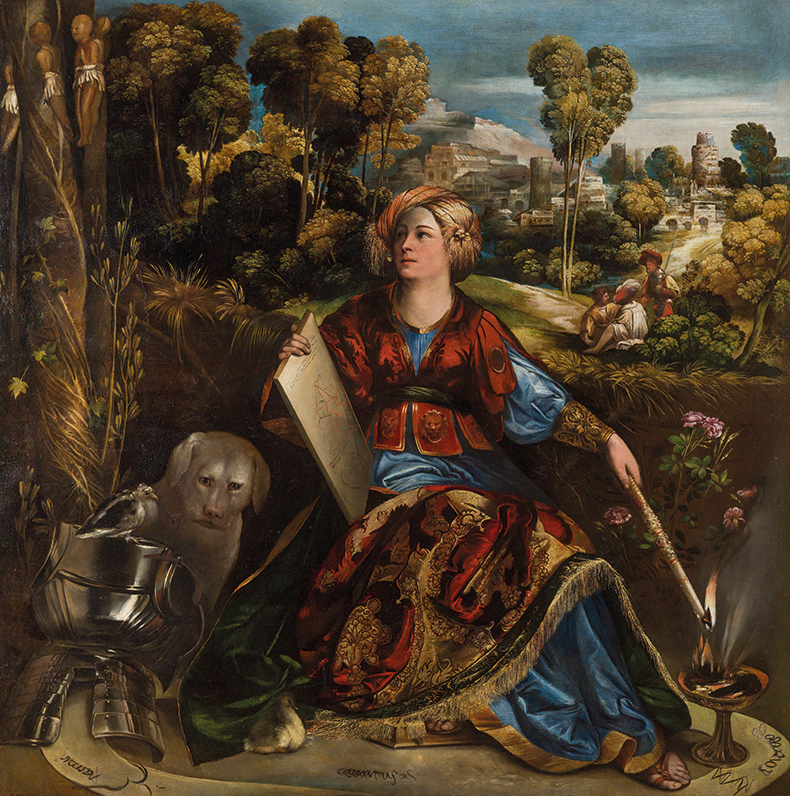
The Sorceress Circe or Melissa (detail; c. 1518), Dosso Dossi. Galleria Borghese, Rome Photo: Mauro Coen; courtesy Galleria Borghese
The connection between Dosso and Ariosto is certainly the most rewarding path through this particular enchanted wood. Both painter and poet were the eldest sons of respectable but cash- and land-poor families, historically dependent upon Estense service. By 1513, when Dosso made his first known work at Ferrara, Ariosto had been a retainer of Cardinal Ippolito d’Este, younger brother of Duke Alfonso I, for a decade. The next year Dosso was employed and, it seems, soon personally liked by the duke. Alfonso’s household was seemly compared to his notionally clerical brother’s, under the civilising influence of his second wife, Lucrezia Borgia.
Lucrezia, daughter of a notorious pope, sister of a famous tyrant, resembles Dosso’s Maga slightly in figure and colouration, more thoroughly in her beautiful, dangerous, disputed reputation. The National Gallery of Victoria has a portrait controversially identified with Lucrezia, possibly by Dosso, or by Dosso with his younger brother and frequent collaborator Battista, or by Battista alone. Ariosto ranked the due Dossi among the greatest artists of his lifetime in one of Orlando Furioso’s delightfully exasperating digressions. Vasari reproached the poet for having put personal friendship and local pride above aesthetic discrimination by this inclusion; posterity would in turn place Vasari distinctly below Dosso.
Socially, at least, Dosso and his brother were intimates and equals of the Renaissance’s greatest painters, as well as of Ferrara’s foremost poet. Dosso entered Titian’s Venetian orbit; his landscapes, in their meditative mood and thick painterly texture, recall even more closely the style of Giorgione, who died in 1510 when Dosso was in his early twenties. Battista by contrast gravitated to Rome and Raphael; this artistic divergence may have accompanied or even expressed other tensions. The brothers quarrelled about money and were apparently of dissimilar dispositions: Dosso ‘affable’, ‘a peaceable and quiet soul’; Battista ‘a turbulent and contentious spirit’.
When Duke Alfonso erupted in fury at the ailing Raphael over his slowness to work on the duke’s private camerino, Battista enlisted his elder brother, whatever their differences, to speak on his celebrated friend’s behalf. Dosso failed to effect any change in Alfonso’s hard heart, and after Raphael’s death in 1520 the duke tried to sue his estate. Dosso was among the painters to whom Alfonso – Raphael having escaped him in life and death – turned for the decoration of his apartments, in which the maga may have played a part.
Since the 1900s the estimated date of the painting has floated between 1516 and 1523. At the earliest part of that range stand the composition of its Borghese acquaintance, Titian’s Sacred and Profane Love, generally acknowledged as a direct and recent influence; the publication of Orlando Furioso; and visits by Dosso to Venice and by Titian to Ferrara, during which the painters saw much of one another. The painting is now dated to c. 1518, the date when Ariosto joined the Dossi in service to the duke rather than the cardinal.
The X-rays of the 1990s were to discover a more bewitching secret. Rather than the dog beside a heap of gleaming, empty arms, Dosso initially painted – and overlaid only at a very late stage – a standing knight sharing an adoring gaze with the delectable maga. Dosso’s subject now appears less akin to Melissa than to a more memorable and immoral Ariostan maga, Alcina. At first on the point of transforming her swain, in Dosso’s final version she dreamily stares over the noble head of her art’s now canine victim.
From the December 2022 issue of Apollo. Preview and subscribe here.
Unlimited access from just $16 every 3 months
Subscribe to get unlimited and exclusive access to the top art stories, interviews and exhibition reviews.

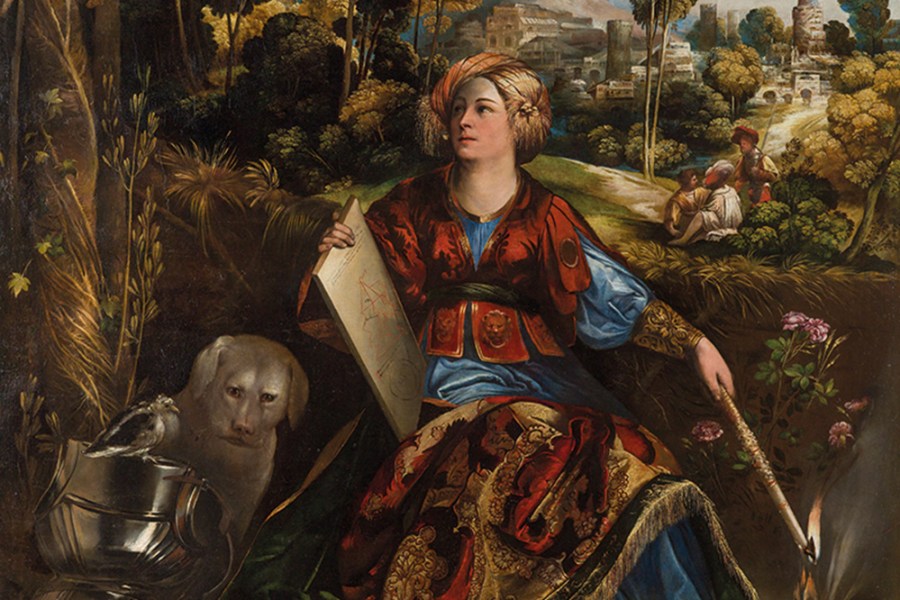
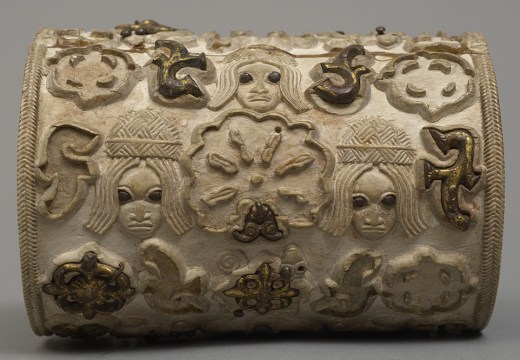
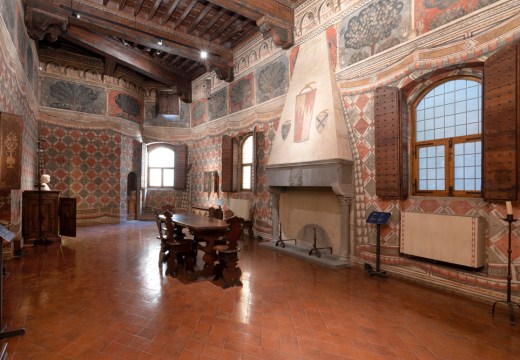
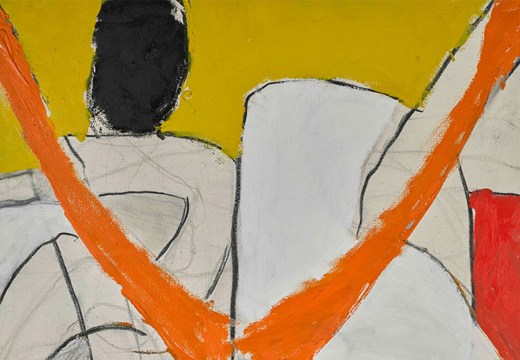









![Masterpiece [Re]discovery 2022. Photo: Ben Fisher Photography, courtesy of Masterpiece London](http://www.apollo-magazine.com/wp-content/uploads/2022/07/MPL2022_4263.jpg)
It’s time for the government of London to return to its rightful home